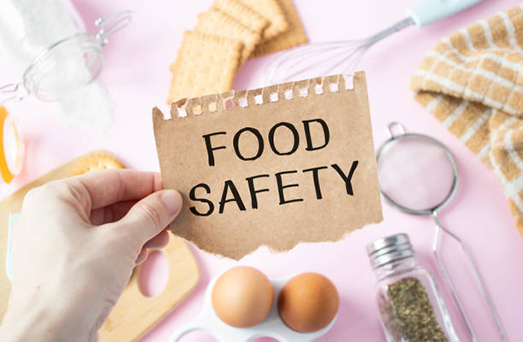Food Safety Culture
Page Information

Contents
Food Safety Culture
What is FSSC 22000(Food Safety Culture)?
Food safety is essential for food manufacturers. The World Health Organization estimates that almost one in 10 people is sickened by eating food processed or prepared by others. Consequently, the practices designed to ensure the safety of our food are as important as ever, the need for what organizational dimensions drive the maturity of food safety, and how a strong food safety maturity can be sustained over time through the organization’s culture, resulting in the concept of a ‘Food safety culture’.
Food safety culture means “shared values, beliefs and norms that affect mindset and behavior toward food safety in, across and throughout an organization.” Food safety and quality management system establishes guidelines and protocols to ensure that food is manufactured in safe and good standards, and food safety culture provides the attitudes and behaviors that drive the success of the system. Creating a mature food safety culture can help ensure that food safety and quality management system is effectively implemented, maintained and continuously improved.
 < What is FSSC 22000(Food Safety Culture)? >
< What is FSSC 22000(Food Safety Culture)? >
Requirements
Food safety culture is a GFSI* requirement, and its importance is growing as it is required by other GFSI recognized standards such as SQF and BRCGS as well as FSSC 22000. (*GFSI is an international initiative for safe food management established for the purpose of responding to food safety issues, and various global food companies such as McDonalds, Nestle, Coca-Cola, and Walmart have participated.)
Evidence of the senior management’s commitment to establish, implement, maintain and continuously improve the food safety management system shall be provided. This shall include elements of food safety culture, at a minimum consisting of :
 < Food Safety Culture Requirements >
< Food Safety Culture Requirements >
• Communication
• Training
• Feedback from employees
• Performance measurement on food safety related activities
Key Elements
 < Food Safety Culture Key Elements >
< Food Safety Culture Key Elements >
1. Commitment
Food safety culture starts with top management. Food safety culture cannot be implemented without a clear policy and participation from top management. The leadership shall :
• Be responsible for the food safety culture
• Show responsible the food safety culture behavior
• Implement the food safety policy
It includes the commitment of top management, as well as the commitment of management and all employees to the safe production and distribution of food.
2. Communication
Communication is key :
• Frequent communication within the organization about food safety issues,
• Focus on priorities,
• Encouraging feedback from employees.
Open and clear communication is required between all employees in the business, within an activity, and between consecutive activities, including communication of deviations and expectations.
3. Training
It means training on food safety and on the importance of food safety and hygiene by all employees in the business. Training can increase awareness of food safety within the organization. Management needs to invest in training, clearly define responsibilities and authorities, show leadership interest in what happens on the shop floor.
4. Feedback & Engagement
Food safety culture is about awareness and mindset that is supported by the leadership team. Management can realize feedback and engagement through actions such as :
• Engage employees in the FSMS
• Encourage employees to report positive and negative issues
• Show that the leadership team takes the reports seriously
• Award positive behavior
• Address issues that threaten the food safety culture
5. Performance Measurement
Leadership from the management is key for implementing food safety culture mindset and behavior. It shall analyze the current food safety culture, define the gaps, define an improvement strategy, and monitor the improvement.
Conclusion
Food safety related laws and formalized standards have done much to make the global food supply safer for those living in today’s industrialized world. Now, to be successful and sustainable, food safety must go beyond formal regulations to live within the culture of a company.
 < FSSC 22000 Food Safety Culture >
< FSSC 22000 Food Safety Culture >
Food safety culture is not a separate management system, it should be integrated in the FSMS and adds the element of culture next to the existing focus on food safety. The relationship between food safety and quality management system and food safety culture is interconnected and mutually supportive. By creating a positive food safety culture, food manufacturers can ensure that food safety and quality management system is implemented, maintained and continuously improved.
[ Reference Document ]
- A Culture of Food Safety – A Position Paper from the Global Food Safety Initiative (GFSI)
- GFSI Benchmarking Requirements Version 2020.1 (GFSI)
- FSSC 22000 Guidance Document: Food Safety Culture (Foundation FSSC)
- The FSSC 22000 Approach to Food Safety Culture (Foundation FSSC)
- PreviousESG Management 23.05.12
- NextISO/IEC 27001:2022 Information Security Management System 23.03.31
Comment list
There are no registered comments.

